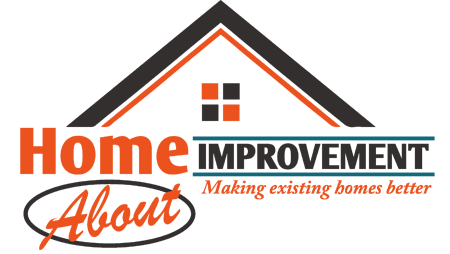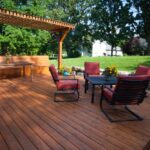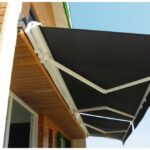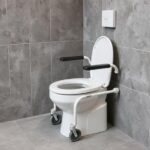As a mold remediation and cleaning specialist, one of the most common questions I receive from clients is how to properly clean and disinfect after mold testing. While mold testing can identify the presence and type of mold in your home or business, it’s crucial to follow proper cleaning and disinfection procedures to ensure that any existing mold spores are removed and future growth is prevented.
The first step in effectively cleaning and disinfecting after mold testing is identifying the affected areas. This may involve removing any visible signs of mold growth, such as discoloration or musty odors.
It’s important to note that even if you don’t see any visible mold, it could still be present in hidden areas like behind walls or under flooring. Once you’ve identified all affected areas, you can begin the process of thoroughly cleaning and disinfecting to prevent further spread of mold spores.
Identifying Affected Areas
Before beginning the cleaning and disinfecting process, it is crucial to identify all affected areas. This means inspecting every nook and cranny of your home or business for any signs of mold growth.
You may be tempted to only check visible areas, but mold can grow behind walls, under floors, and in other hidden spaces. To accurately identify affected areas, you should enlist the help of a professional mold testing company. They have the tools and expertise needed to detect even the smallest traces of mold.
Once identified, it’s important to create a detailed map of these areas so that you can effectively target them during the cleaning process. Ignoring even one small area with mold growth can result in its spread throughout your property once again.
Take the time to thoroughly investigate each space and don’t hesitate to ask for assistance from professionals if needed. By properly identifying affected areas, you’ll be able to move on to removing visible signs of mold growth with confidence.
Removing Visible Signs Of Mold Growth
Once visible signs of mold growth have been identified and testing has been conducted, it’s important to take immediate action in removing the mold.
The first step is to contain the affected area by sealing off any vents or doorways with plastic sheeting to prevent spores from spreading to other areas of your home.
Next, all contaminated materials should be removed and disposed of properly. This includes any porous items such as drywall or carpet that cannot be salvaged. Non-porous surfaces can typically be cleaned with a solution of detergent and water followed by disinfection using an EPA-approved product.
To ensure complete removal of all mold spores, it’s important to follow these steps:
- Thoroughly scrub all surfaces with a stiff brush.
- Use a HEPA vacuum to remove loose debris and dust particles.
- Apply a disinfectant spray according to manufacturer instructions.
By following these guidelines, you can effectively remove visible signs of mold growth and prevent further contamination in your home.
However, it’s still crucial to conduct a thorough inspection to identify any hidden pockets of mold that may not be immediately visible.
Conducting A Thorough Inspection
As a mold remediation and cleaning specialist, conducting a thorough inspection is paramount in ensuring the safety of your home or building.
The first step is to investigate whether there are any visible signs of mold growth. This can include discoloration on walls or ceilings, musty odors, or water damage.
Once you have identified potential areas of concern, it’s important to conduct a comprehensive assessment using specialized equipment such as moisture meters and thermal imaging cameras. These tools will help identify hidden pockets of moisture that may be contributing to mold growth.
Finally, it’s critical to take samples for laboratory analysis to determine the type and extent of mold present. Based on these results, we can develop an effective remediation plan tailored specifically to your needs.
By following these steps and taking a careful approach, we can ensure that every aspect of your property has been thoroughly inspected before proceeding with further action.
To effectively clean and disinfect after mold testing, choosing the right cleaning products is crucial. In the next section, we’ll explore some key factors to consider when selecting cleaners that will effectively eliminate mold while also being safe for use in your home or building.
Choosing The Right Cleaning Products
When it comes to choosing the right cleaning products, it’s important to consider the types of cleaners to use, safety precautions to take, and the environmental impact.
Depending on the type of mold present, I may suggest either a water-based cleaner or a solvent-based cleaner; both are effective, but they have different levels of toxicity.
When using any chemical cleaner, it’s important to wear gloves and a mask to protect yourself; additionally, be sure to open windows and doors to ensure proper ventilation.
Lastly, consider the environmental impact of the products you are using; opt for eco-friendly products when possible to reduce your impact on the environment.
Types Of Cleaners
When it comes to cleaning and disinfecting after mold testing, choosing the right cleaning products is crucial. There are various types of cleaners available in the market, each with its unique properties and purposes. As a mold remediation and cleaning specialist, I always recommend using EPA-registered disinfectants that are explicitly labeled for use against fungi.
One type of cleaner that works well for removing surface mold growth is hydrogen peroxide-based solutions. These solutions have high oxidizing power and can effectively kill spores on surfaces without leaving any harmful residue behind. However, they may not be suitable for porous materials like carpets or upholstery as they can cause discoloration.
Another popular choice among homeowners is bleach-based cleaners. While bleach can effectively kill most molds on non-porous surfaces, it does not penetrate deeply into porous materials where mold often grows unnoticed. Also, prolonged exposure to bleach vapors can irritate eyes and respiratory systems, making it unsuitable for individuals with allergies or asthma.
In conclusion, when selecting a cleaner for post-mold testing clean-up, one must consider factors such as surface type(s), product efficacy, environmental impact, and personal health concerns before making a purchase decision. Always read product labels carefully and follow instructions regarding application procedures and safety precautions. Remember that proper cleanup involves more than just wiping down visible mold; thorough inspection followed by targeted treatment will help prevent future growths from occurring.
Safety Precautions
Now that we have discussed the different types of cleaners available for mold remediation, let’s talk about safety precautions.
When handling cleaning products, it is essential to take proper safety measures to protect yourself and others from harm.
Always wear protective gear such as gloves, goggles, and a mask when applying cleaners to prevent skin or eye irritation and inhalation of harmful fumes.
It is also crucial to keep the area well-ventilated during the cleaning process by opening windows or using fans to circulate air.
This will help minimize exposure to any chemicals or fumes released during treatment.
Additionally, be sure to follow manufacturer instructions carefully regarding product application, dilution ratios, and contact times with surfaces.
Finally, after completing the clean-up process, ensure that all tools used for mold remediation are properly cleaned and disinfected before storing them away.
This includes wiping down surfaces with an EPA-registered disinfectant solution and washing any reusable equipment like brushes or sponges in hot soapy water.
By taking these necessary precautions, you can effectively remove mold growth while keeping yourself and those around you safe from potential hazards.
Environmental Impact
Now that we have covered safety precautions, let’s discuss the environmental impact of using different types of cleaners for mold remediation.
As a mold remediation and cleaning specialist, it is essential to consider how our actions can affect the environment.
Some chemical-based cleaners may contain harsh ingredients that are harmful to both humans and the environment. These products can release toxins into the air or waterways when improperly disposed of, leading to pollution and potential harm to wildlife.
On the other hand, some eco-friendly cleaners use natural ingredients that are biodegradable and pose less harm to the environment. Using these types of products not only protects the environment but also promotes sustainability in our homes and communities.
As specialists, it is important for us to educate clients on environmentally safe alternatives during mold remediation projects.
Proper Ventilation And Protective Gear
When it comes to cleaning up after mold testing, proper ventilation is crucial. Mold spores can cause respiratory issues when inhaled, so make sure the area you’re working in is well-ventilated by opening windows or using fans.
Additionally, always wear protective gear such as gloves, goggles, and a mask to prevent exposure to hazardous chemicals. It’s important to note that not all molds are created equal – some produce toxins that can be harmful if ingested or inhaled over long periods of time.
Therefore, it’s best to leave the cleanup process to professionals who have experience dealing with these types of situations. If you do choose to tackle the task yourself, keep in mind that mold removal requires specific techniques and products.
Using bleach or other household cleaners may actually worsen the problem by spreading spores around instead of killing them. Don’t take any chances with your health – hire a professional. Protect yourself from exposure with proper gear. Choose the right products for effective mold removal.
Moving on to disinfecting surfaces and materials… …use a solution of water and bleach (1 cup of bleach per gallon of water), or a cleaning product specifically labeled for disinfecting against mold and mildew. Follow the instructions carefully and allow for proper ventilation during and after the cleaning process.
Disinfecting Surfaces And Materials
Congratulations! You’ve just received the results of your mold testing and now you’re ready to clean up. But wait, don’t reach for that bleach bottle just yet. As a mold remediation specialist, I’m here to tell you that there’s more to cleaning up after mold than just wiping it away with disinfectant.
First things first, make sure to wear personal protective equipment such as gloves and a mask before starting the cleanup process.
Next, remove any porous materials that are heavily contaminated with mold such as drywall or carpeting. These items cannot be effectively cleaned and should be disposed of properly.
For non-porous surfaces such as tile or metal, use a solution of water and detergent to clean off visible mold growth.
Once the surface is clean, follow up with a disinfectant specifically labeled for use against fungi or mold. Be sure to read the instructions carefully and allow sufficient contact time for maximum effectiveness.
Now that you’ve successfully disinfected all surfaces affected by mold growth, it’s important to take steps to prevent future infestations. In the next section, we’ll discuss strategies for preventing new molds from taking hold in your home or business space.
Preventing Future Mold Growth
To prevent future mold growth in your home, it is important to address any underlying issues that may be contributing to its growth. Here are some tips on how to do this:
- Control moisture levels: Mold thrives in damp environments, so keeping humidity levels below 60% can help prevent its growth.
- Fix leaks promptly: Any water damage or leak should be repaired as soon as possible to prevent the development of mold colonies.
- Increase ventilation: Proper air circulation can reduce the risk of mold growing by promoting evaporation and drying out damp areas.
- Clean regularly: Regular cleaning and maintenance can help remove any potential food sources for mold spores and minimize their ability to grow.
By implementing these preventative measures, you can significantly reduce the likelihood of experiencing a mold problem in the future.
However, if you have already experienced significant mold growth or suspect there may be hidden mold behind walls or under flooring, seeking professional assistance may be necessary.
Remember that preventing future mold growth is an ongoing process that requires diligence and attention to detail. By staying proactive and vigilant, you can keep your home free from harmful mold contaminants for years to come.
Seeking Professional Assistance If Needed
Professional assistance is paramount when it comes to mold remediation and cleaning. Mold spores can spread quickly and easily, and if not handled correctly, they can cause serious health problems. That’s why you need a team of experts who have the knowledge, experience, and equipment needed to handle the situation.
Our team of professionals will start by assessing the extent of the contamination. We’ll take samples to determine what type of mold we’re dealing with so that we can create an appropriate plan for removing it.
Our specialists will then use advanced techniques and specialized equipment to clean up the affected areas thoroughly.
We understand that every case is unique and requires custom solutions. That’s why we offer personalized services tailored to your specific needs. You can rest assured knowing that our team will work tirelessly until your property is safe from any potential mold growth or contamination.
Don’t hesitate – contact us today for professional assistance!
Conclusion
In conclusion, properly cleaning and disinfecting after mold testing is crucial in maintaining a healthy living environment.
By identifying affected areas, removing visible signs of mold growth, and conducting a thorough inspection, you can effectively address the problem at hand.
It’s important to choose the right cleaning products and utilize proper ventilation and protective gear for your safety.
Once surfaces and materials have been disinfected, it’s essential to take preventive measures against future mold growth.
This includes fixing leaks or moisture problems promptly and keeping indoor humidity levels below 60%.
If necessary, seek professional assistance from a certified mold remediation specialist to ensure that all mold spores are eliminated completely.
Remember, taking these steps will not only improve air quality but also promote overall wellness for you and your loved ones.











